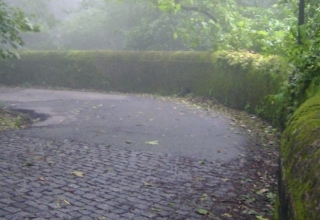
Are their “Facts” based on and influenced by their beliefs, attitudes or values? We don’t really case. We only know that they are “right” or that they are ”wrong.” Applying the Strong Whorfian hypothesis, we would even suggest that the use of a simple label itself influences the way in which we view and interact with (or not interact with) this person. It is much easier to accept or dismiss another person when we use a simple label rather than seeking to understand at a deeper level what is taking place. One of us has a friend who is a very dedicated (and successful) advocate for specific civil rights. She has indicated that she doesn’t want to learn more about or seek to understand her opponents. They are the “enemy” and are to be defeated—regardless of the reasons for their incivility.
Syntax
It is not just the words being used that seem to form a social construction. It is also the way in which these words are arrayed. Some languages, for instance, are “right-branching” whereas others are “left-branching” These two terms refer to the way in which a sentence is structured. The language in which this essay is written (English) can be identified as “right branching”—for the modifiers are placed after the subject. For instance, as the author of this essay, we can write that “the domain of Facts is one in which there is considerable confusion and in which a great deal of money is at play.” The emphasis in this statement is upon the word “Facts” – while the modifiers are what we have to say about Facts. You, as the reader, are directed to attend first to the main topic: Facts. We then take you in one or more directions from this main subject.
A left-branching structure is less commonly used in English—though it is quite common in certain other language groups. When an English sentence is structured with left branching, then the subject comes after the modifiers. Our sentence would now read: “A great deal of money and considerable confusion is at play when we consider the domain in which Fact reside.” As the reader, you must wait for the “punch line.” What is the writer leading us to with this concern about money and clarification? There is drama in the use of left-branching structures (this sentence itself is left-branching). However, the left-branching structure can also produce quite a bit of misunderstanding (this is a right-branching sentence).
Many readers will recognize that the distinctive between right and left branching is perhaps nothing more than the distinctive made between active voice (right branching) and passive voice (left branching). It is more complicated than this. However, in the present analysis we will consider the terms active and right (and passive and left) to be essentially equivalent. The term “right branching” usually refers to the preponderance of (and preference for) active voice in a particular language group, with “left branching” similarly referring to the preponderance of (and preference for) passive voice.
With this clarification in place, we suggest that there is much more at play when we consider the syntactic structure of a sentence and the predominance of right or left branching communication. We are ‘in control” with right branching communication: we set up the subject for our reader and then go to work on it. Conversely, the left-branching statement is much less clearly in our control, for our reader is likely to set up their own assumptions about what we are about to say or write. While the left-branch can be dramatic and sometimes compelling (with the reader waiting for clarity), it can also be a source of not only misunderstanding but also distraction and loss of focus.
Download Article 1K Club


















